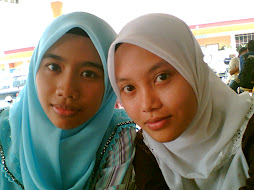Introduction
There are many learning theories in relation to education. A teacher can use one or a combination of theoretical approaches to enhance the learning process in the classroom. This essay will discuss the behavioral, cognitive, and humanistic theories of learning, as well as the role of the student and teacher in using each theory, and how a unit of multiplication in a third grade classroom could possible be taught using each approach.
Behavioral Learning Theory
According to the behavioral theory, learning involves alterations in modifications in behavior (Barrett, 2006). Behaviorists believe that what one learns is influenced by the environment instead of the student. The theory of behavioral learning also contends that contiguity and reinforcement, whether positive or negative, are essential to the learning process (Smith, 2005).
The teacher's function, according to the behavioral learning theory, is to make use of negative reinforcers to end unwanted behavior and positive reinforcers to strengthen wanted behavior. Reinforcers may also be used to teach new skills. This process is referred to as shaping. Teacher's who follow the behaviorists are also expected to use punishment and consequences to bring about a behavior change and facilitate learning (Slavin, 2003, pp. 144-151). The only thing required by students is the role of active responder. Students need to be able to respond to any reinforcement used by the teacher and willingly change their behavior to enable learning.
Behavioral learning concepts can be used to assist in teaching a unit on multiplication. This can be done by using positive reinforcers to shape the way students learn the material. For example, the teacher could give each student a piece of candy once they effectively learn the times table for each number, one through ten. The students may be more likely to work harder because they know they will receive a desired reward for their work. Teachers can also use drill and practice to increase the likelihood that the information in the unit will be retained.
There are many learning theories in relation to education. A teacher can use one or a combination of theoretical approaches to enhance the learning process in the classroom. This essay will discuss the behavioral, cognitive, and humanistic theories of learning, as well as the role of the student and teacher in using each theory, and how a unit of multiplication in a third grade classroom could possible be taught using each approach.
Behavioral Learning Theory
According to the behavioral theory, learning involves alterations in modifications in behavior (Barrett, 2006). Behaviorists believe that what one learns is influenced by the environment instead of the student. The theory of behavioral learning also contends that contiguity and reinforcement, whether positive or negative, are essential to the learning process (Smith, 2005).
The teacher's function, according to the behavioral learning theory, is to make use of negative reinforcers to end unwanted behavior and positive reinforcers to strengthen wanted behavior. Reinforcers may also be used to teach new skills. This process is referred to as shaping. Teacher's who follow the behaviorists are also expected to use punishment and consequences to bring about a behavior change and facilitate learning (Slavin, 2003, pp. 144-151). The only thing required by students is the role of active responder. Students need to be able to respond to any reinforcement used by the teacher and willingly change their behavior to enable learning.
Behavioral learning concepts can be used to assist in teaching a unit on multiplication. This can be done by using positive reinforcers to shape the way students learn the material. For example, the teacher could give each student a piece of candy once they effectively learn the times table for each number, one through ten. The students may be more likely to work harder because they know they will receive a desired reward for their work. Teachers can also use drill and practice to increase the likelihood that the information in the unit will be retained.



No comments:
Post a Comment